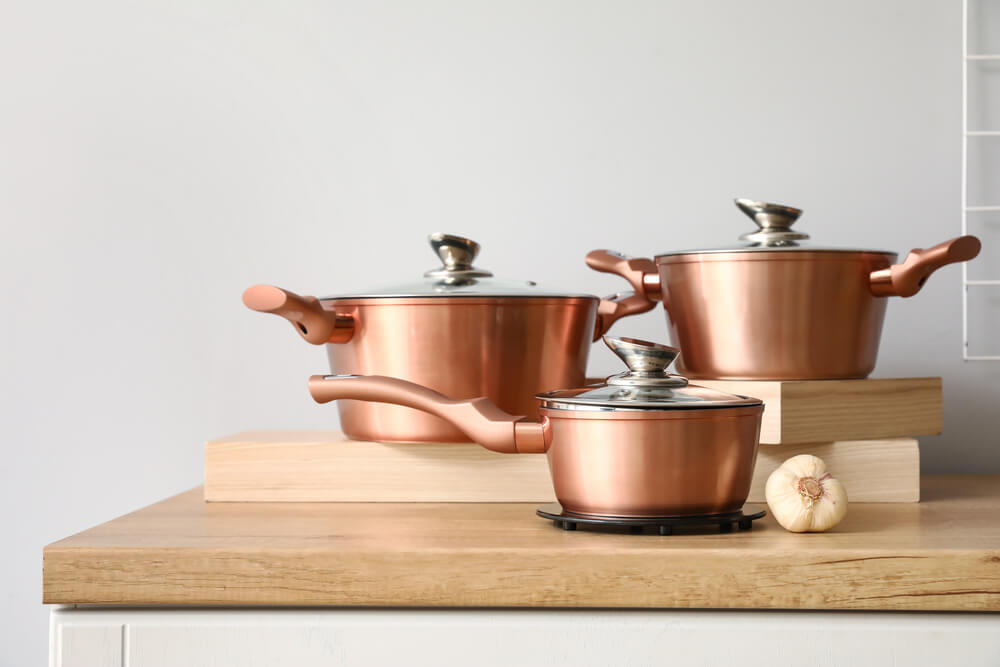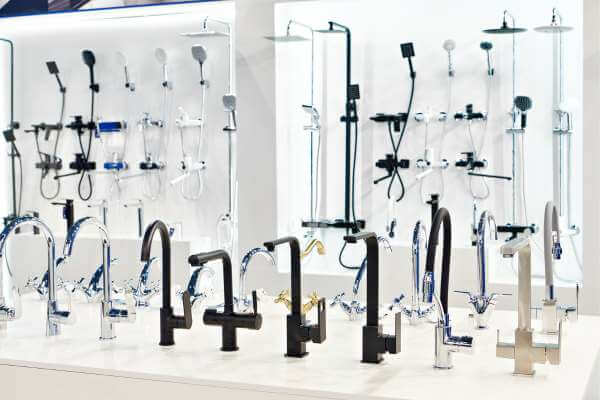Brass is a metal that has been used for centuries in various fields, such as art, architecture, music, and jewelry. Brass is an alloy of copper and zinc, and it has a warm, golden color that can range from pale yellow to reddish-brown. It is also durable, corrosion-resistant, and easy to shape and polish.
In recent years, brass has become a popular choice for kitchen design, as it can add a touch of elegance, sophistication, and personality to any space. Brass can complement different styles of kitchen, from modern to traditional, and it can create a contrast or harmony with other materials and colors.
However, incorporating brass into your kitchen design requires some planning and consideration, as too much or too little brass can ruin your kitchen’s balance and aesthetic. In this article, I will share some tips and ideas on how to Incorporate Brass into Your Kitchen Design, covering the following aspects:
- Choosing the right brass finish for your kitchen
- Incorporating brass fixtures and hardware
- Using brass accents in kitchen décor
Choosing the Right Brass Finish for Your Kitchen
One of the first things to consider when incorporating brass into your kitchen design is the finish of the brass. The finish refers to the surface treatment or coating of the metal, which can affect its color, texture, and shine. There are different types of brass finishes available, such as:
- Polished brass: This is the most common and classic finish for brass, which gives it a bright and shiny appearance. Polished brass can create a luxurious and glamorous look in your kitchen, but it can also show fingerprints and smudges easily.
- Brushed brass: This is a finish that creates a matte and smooth surface on the brass, by using abrasive tools or materials. Brushed brass can create a more subtle and contemporary look in your kitchen, but it can also scratch or wear off over time.
- Antique brass: This is a finish that gives the brass an aged and weathered look, by applying chemicals or heat to the metal. Antique brass can create a rustic and vintage look in your kitchen, but it can also vary in color and quality depending on the process.
- Satin brass: This is a finish that creates a soft and silky surface on the brass, by using a cloth or a pad to buff the metal. Satin brass can create a warm and cozy look in your kitchen, but it can also fade or tarnish over time.
When choosing the right brass finish for your kitchen, you should consider the following factors:
The style of your kitchen:
You should choose a brass finish that matches or complements the overall style of your kitchen. For example, if you have a modern and minimalist kitchen, you may want to opt for a brushed or satin brass finish, which can create a sleek and sophisticated look. If you have a traditional or farmhouse kitchen, you may want to opt for a polished or antique brass finish, which can create a rich and cozy look.
The lighting of your kitchen:
You should also consider how the lighting of your kitchen affects the appearance of the brass. For example, if you have a lot of natural light in your kitchen, you may want to opt for a matte or antique brass finish, which can reduce glare and reflect warmth. If you have less natural light in your kitchen, you may want to opt for a shiny or polished brass finish, which can brighten up and enhance the space.
The maintenance of your kitchen:
You should also consider how much time and effort you are willing to spend on maintaining and cleaning your brass. For example, if you want to keep your brass shiny and spotless, you may want to opt for a polished or satin brass finish, which can be easily wiped with a soft cloth. If you don’t mind some patina or tarnish on your brass, you may want to opt for an antique or brushed brass finish, which can add character and charm to your kitchen.
Incorporating Brass Fixtures and Hardware
One of the easiest and most effective ways to incorporate brass into your kitchen design is by adding brass fixtures and hardware. Fixtures and hardware are the functional elements of your kitchen, such as faucets, sinks, knobs, handles, hinges, hooks, etc. By choosing brass fixtures and hardware for your kitchen, you can add some sparkle and contrast to your space.
However, incorporating brass fixtures and hardware also requires some planning and consideration, as too much or too little brass can ruin your kitchen’s balance and aesthetic. Here are some tips and ideas on how to use brass fixtures and hardware in your kitchen:
Cabinet hardware:
One of the most common ways to add brass to your kitchen is by replacing or installing new cabinet hardware, such as knobs, pulls, latches, etc. Cabinet hardware is an easy way to update and refresh your kitchen cabinets, as well as add some style and personality. You can choose from different styles of brass cabinet hardware, such as modern, traditional, vintage, or eclectic, depending on the look you want to achieve. You can also mix and match different shapes and sizes of brass cabinet hardware, such as round, square, bar, or ring, depending on the function and the design of your cabinets. When adding brass cabinet hardware to your kitchen, you should consider the following factors:
The color and material of your cabinets:
You should choose brass cabinet hardware that matches or complements the color and material of your cabinets. For example, if you have white or light-colored cabinets, you may want to opt for a shiny or polished brass finish, which can create a contrast and a focal point. If you have dark or wood-colored cabinets, you may want to opt for a matte or antique brass finish, which can create harmony and warmth.
The placement and spacing of your cabinet hardware:
You should also consider how to place and space your cabinet hardware on your cabinets. For example, if you have a lot of cabinets in your kitchen, you may want to opt for smaller or simpler brass cabinet hardware, which can create balance and consistency. If you have fewer cabinets in your kitchen, you may want to opt for larger or more ornate brass cabinet hardware, which can create an impact and a statement.
The installation and maintenance of your cabinet hardware:
You should also consider how to install and maintain your brass cabinet hardware on your cabinets. For example, if you are replacing your existing cabinet hardware with brass ones, you may want to opt for brass cabinet hardware that has the same size and shape as your old ones, which can make the installation easier and faster. If you are installing new cabinet hardware on your cabinets, you may want to opt for brass cabinet hardware that has screws or nails that match the color of the brass, which can make the installation neater and more secure. You should also consider how to clean and polish your brass cabinet hardware regularly, which can prevent tarnish and corrosion.
Faucets:
Another common way to add brass to your kitchen is by replacing or installing new faucets. Faucets are one of the most used and visible elements of your kitchen, as they provide water for cooking, washing, drinking, etc. By choosing brass faucets for your kitchen, you can add some elegance and sophistication to your space.
You can choose from different styles of brass faucets, such as single-handle, double-handle, pull-down, pull-out, etc., depending on the function and the design of your sink. You can also choose from different shapes and sizes of brass faucets, such as curved, straight, tall, short, etc., depending on the space and the style of your kitchen.
Using Brass Accents in Kitchen Décor
Another way to incorporate brass into your kitchen design is by adding brass accents to kitchen décor. Accents are the decorative elements of your kitchen, such as lighting fixtures, wall art, clocks, vases, etc. By choosing brass accents for your kitchen, you can add some charm and character to your space.
However, using brass accents in kitchen décor also requires some planning and consideration, as too much or too little brass can ruin your kitchen’s balance and aesthetic. Here are some tips and ideas on how to use brass accents in kitchen décor:
Lighting fixtures:
One of the most common ways to add brass to your kitchen is by replacing or installing new lighting fixtures, such as pendant lights, chandeliers, sconces, or lamps. Lighting fixtures can create a mood and an ambiance in your kitchen, as well as highlight certain areas or features. You can choose from different styles of brass lighting fixtures, such as modern, industrial, vintage, or rustic, depending on the look you want to achieve. You can also choose from different shapes and sizes of brass lighting fixtures, such as round, square, cone, or globe, depending on the space and the style of your kitchen. When adding brass lighting fixtures to your kitchen, you should consider the following factors:
The color and material of your ceiling and walls:
You should choose brass lighting fixtures that match or complement the color and material of your ceiling and walls. For example, if you have a white or light-colored ceiling and walls, you may want to opt for a shiny or polished brass finish, which can create contrast and brightness. If you have a dark or wood-colored ceiling and walls, you may want to opt for a matte or antique brass finish, which can create harmony and warmth.
The placement and height of your lighting fixtures:
You should also consider how to place and heighten your lighting fixtures on your ceiling and walls. For example, if you have a high or vaulted ceiling, you may want to opt for a pendant light or a chandelier that hangs low enough to provide enough light and fill the space. If you have a low or flat ceiling, you may want to opt for a sconce or a lamp that mounts close enough to the ceiling or wall to provide enough light and save space.
The installation and maintenance of your lighting fixtures:
You should also consider how to install and maintain your brass lighting fixtures on your ceiling and walls. For example, if you are replacing your existing lighting fixtures with brass ones, you may want to opt for brass lighting fixtures that have the same size and shape as your old ones, which can make the installation easier and faster. If you are installing new lighting fixtures on your ceiling and walls, you may want to opt for brass lighting fixtures that have wires or cords that match the color of the brass, which can make the installation neater and more secure. You should also consider how to clean and polish your brass lighting fixtures regularly, which can prevent tarnish and corrosion.
Wall art:
Another way to add brass to your kitchen is by adding wall art that features brass elements, such as frames, mirrors, clocks, signs, etc. Wall art can add some personality and character to your kitchen, as well as fill empty spaces and create focal points. You can choose from different styles of brass wall art, such as abstract, geometric, floral, or textual, depending on the theme and the message you want to convey. You can also choose from different sizes and shapes of brass wall art, such as small, large, square, or round, depending on the space and the style of your kitchen. When adding brass wall art to your kitchen, you should consider the following factors:
The color and material of your wall:
You should choose brass wall art that matches or complements the color and material of your wall. For example, if you have a white or light-colored wall, you may want to opt for a shiny or polished brass finish, which can create a contrast and a sparkle. If you have a dark or wood-colored wall, you may want to opt for a matte or antique brass finish, which can create harmony and warmth.
The placement and alignment of your wall art:
You should also consider how to place and align your wall art on your wall. For example, if you have a large or blank wall, you may want to opt for large or multiple pieces of brass wall art that cover most of the wall space and create an impact. If you have a small or busy wall, you may want to opt for a small or single piece of brass wall art that fits in the available space and creates an accent.
The installation and maintenance of your wall art:
You should also consider how to install and maintain your brass wall art on your wall. For example, if you are hanging your brass wall art on your wall, you may want to opt for hooks or nails that match the color of the brass, which can make the installation neater and more secure. If you are mounting your brass wall art on your wall, you may want to opt for adhesive strips or tape that match the color of the wall, which can make the installation easier and faster. You should also consider how to clean and polish your brass wall art regularly, which can prevent tarnish and corrosion.

Conclusion
Brass is a metal that can add a touch of elegance, sophistication, and personality to any kitchen design. Brass can complement different styles of kitchen, from modern to traditional, and it can create a contrast or harmony with other materials and colors.
However, incorporating brass into your kitchen design requires some planning and consideration, as too much or too little brass can ruin your kitchen’s balance and aesthetic. In this article, we shared some tips and ideas on how to use brass in your kitchen design, covering the following aspects :
- Choosing the right brass finish for your kitchen
- Incorporating brass fixtures and hardware
- Using brass accents in kitchen décor
By following these tips and ideas, you can create a beautiful and functional kitchen that features brass elements.


 Hi, my name is Debra Klein and I love modern kitchen designs! As a product reviewer, it’s my mission to help homeowners choose the right modern kitchen accessories for their homes. I want to give them the best solution possible so they can make the best decision for their needs. Thanks for reading!
Hi, my name is Debra Klein and I love modern kitchen designs! As a product reviewer, it’s my mission to help homeowners choose the right modern kitchen accessories for their homes. I want to give them the best solution possible so they can make the best decision for their needs. Thanks for reading!




